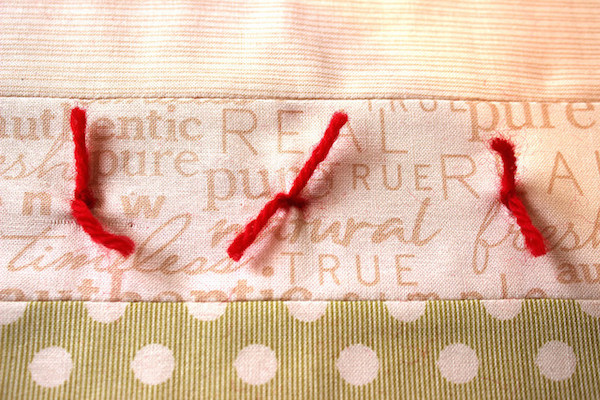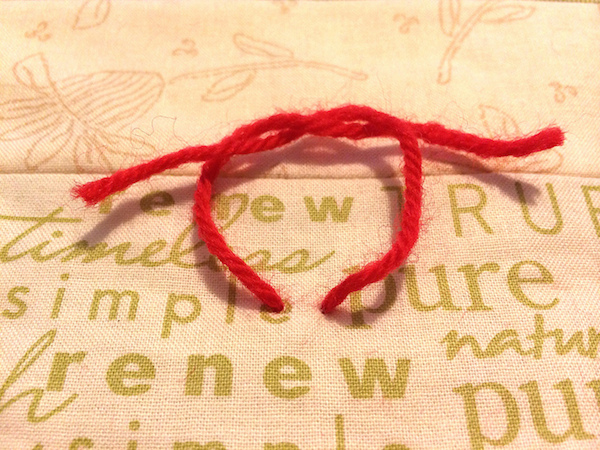Are you looking for a fun and easy alternative to hand quilting? Maybe you just want to try a different quilting technique for finishing a quilt. Perhaps you’ve used a heavy fabric that is difficult to quilt like a thick corduroy or denim? Tying the three layers of your quilt together with hand quilted knots could be just the method you’re looking for!
Which knots are best? How do you tie them? We’ll show you the ropes!

Some handy tips for using knots to tie your quilts.
- The type of batting you chose will determine the distance required between each knot. Check the manufacturer’s specifications. If in doubt, it’s best to aim for a minimum distance of 4″ – 8″ between knots.
- You can use pretty much anything for your ties such as yarn, embroidery floss, perle thread or ribbons. All you need is a material that you can fit through a needle and will survive the wear and tear of a quilt.
- The gap between inserting your needle and it’s return point should be about ¼” – ½” depending on the scale of your project and the thread/yarn you are using.

- Tie in the same direction for a neater and more uniform look.
- Your ties can sit on the top of your quilt or underneath, whichever your prefer.
- Using knots to tie your quilts may not be as robust as machine quilting, so tying is better for quilts that won’t require regular washing.

What are the most popular knots to use for tying quilts?
Square knot
A square knot is an easy and very reliable knot. Insert your threaded needle through all three layers of your quilt sandwich, bringing it back up ¼” – ½” away from the insertion point. Tie a square knot by crossing the left side over the right side, pull tight and then cross the right side over the left and pull tight. Trim the threads at your desired length, approximately 1″.

Surgeon’s knot
The surgeon’s knot is like a square knot with the extra twist of crossing the thread/yarn under a second time before pulling it tight. As we did for the square knot, insert your needle through the quilt and ring it up about ¼” – ½” away from the insertion point and cross the ends over, left side over the right side. Cross it under a second time before pulling it tight. Then take the right side and cross it over the left side twice and pull tight. Trim the threads.
A triple surgeon’s knot is a surgeon’s knot that has been crossed three times before pulling tight on each side.

Continuous knotting
Continuous knotting is a way of quickly sewing the ties into place on your quilt. Thread a needle with a long piece of thread/yarn. Insert the needle through the layers of your quilt and bring it up about 1/2″ away. Do not cut the thread. Insert the needle into the quilt at the next tying point.
Continue until you find the amount of thread you are working with runs out with a least 2″ to spare, so you can use it to tie a knot. Cut the threads in between the insertion points and tie the ends using your favorite knot.

Buttons
Buttons add a wonderful decorative touch to your quilt. Thread the needle with your thread/yarn and insert it through the quilt and the first buttonhole. Insert the needle back through the second buttonhole and tie the threads on the back side of the quilt. Alternatively keep the tails of the ties on top of the quilt with the buttons.
Now you know these knots there’s no stopping you from using them to finish your next quilt. Or even add some knots to a quilt that also has machine or hand quilting for that extra special decorative look.

I often tie quilts with ribbon, but I use PURE SILK RIBBON (3mm wide). It ties extremely tightly (especially with a surgeon's knot) and does not work lose. I have a quilt that my grandmother made over a 100 years ago, it is tied with silk ribbon (simple double knots I think) and not one of them has loosened, though the ribbon has faded a little over time.